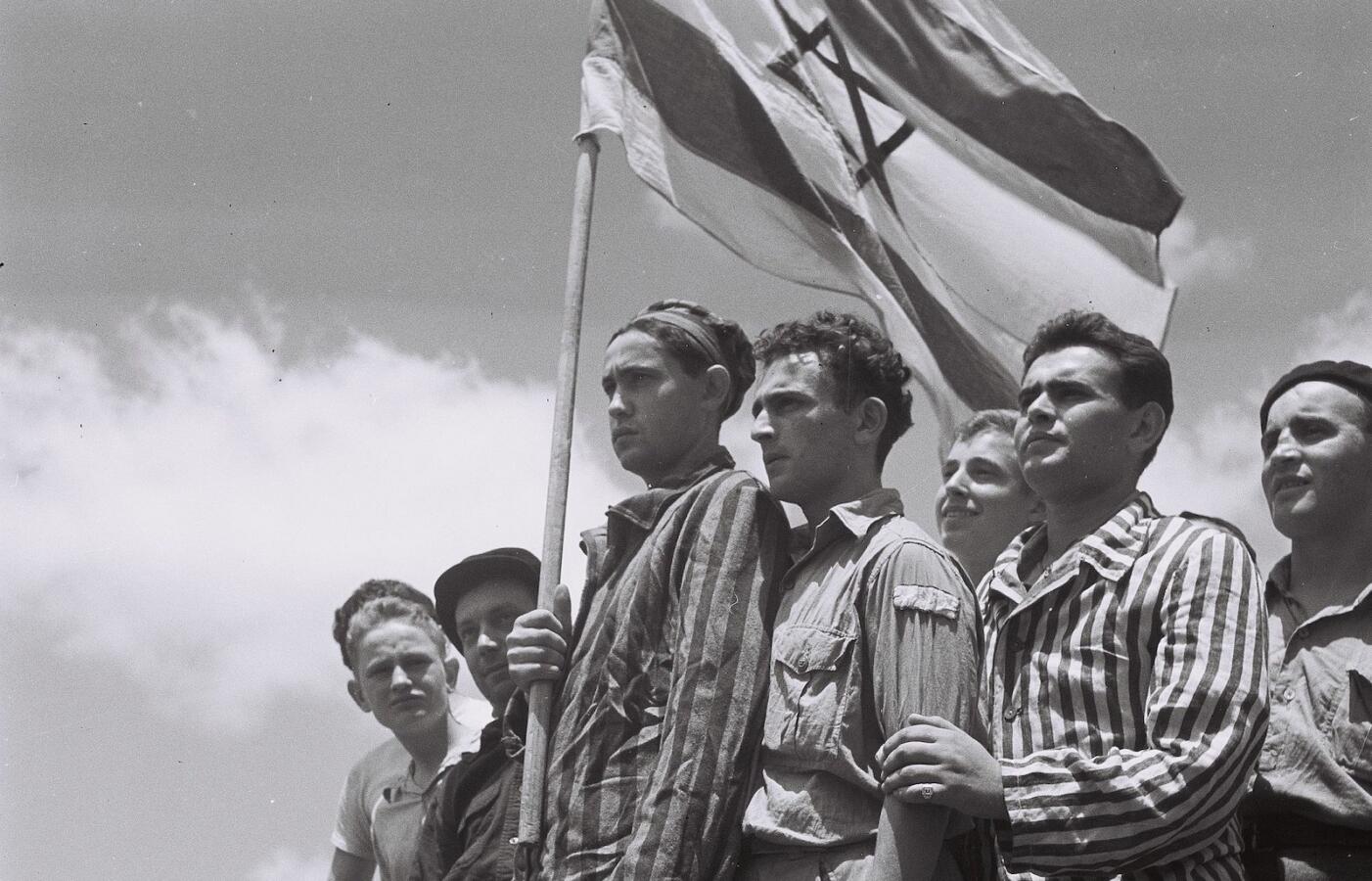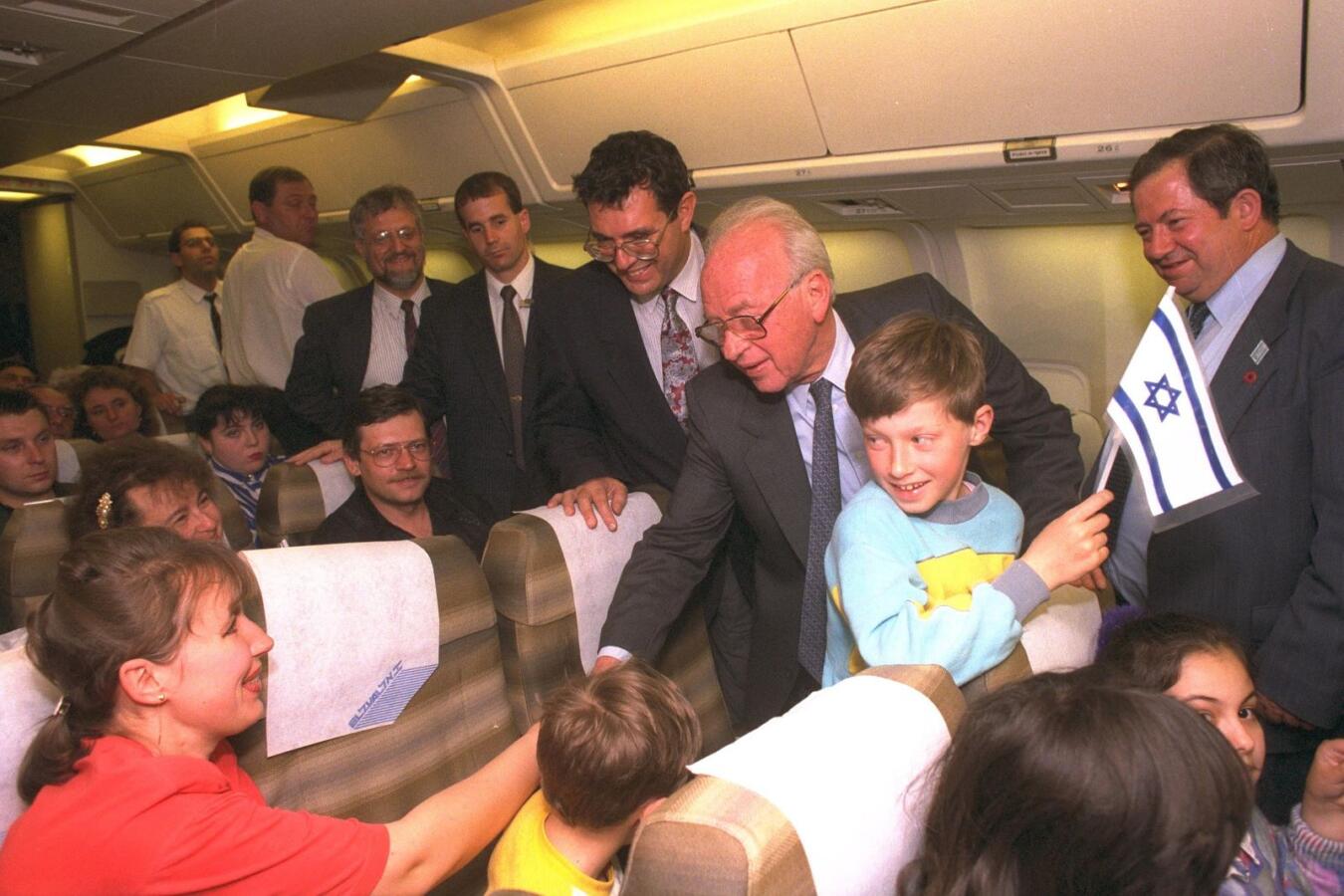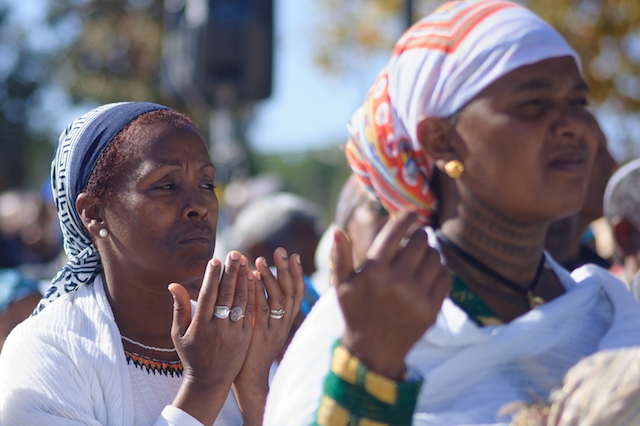Walking through the stalls of the Mahane Yehuda market in Jerusalem is like taking a tour through Jewish history. Shopkeepers sell overflowing mounds of spices from Ethiopia and Yemen. A baker stacks warm challah beside a vast selection of rugelach and babka. Children salviate in front of endless varieties of baklava, halva, knafeh, and other sweets. And a man at the shawarma shop shaves bits of meat off a rotating wheel while his coworker stuffs a pita full with falafel and potato chips. Arabic, Yiddish, Russian, Amharic and Spanish are all spoken alongside Hebrew in the market’s narrow lanes.
The Jews of Israel reflect a diversity of languages, religious traditions, cultural customs and oral histories. While some Jewish Israelis are descended from Jewish communities that have lived continuously in Jerusalem, Safed, Tiberias and elsewhere in Israel, the vast majority are descended from Jewish immigrants, many of them refugees who fled to the Jewish state to escape persecution, bringing a wide range of customs, languages and folkways with them to the Jewish state.
While Israeli Jews are descended from immigrants who arrived from virtually every country on earth, they are often broadly categorized into four main groupings based on their geographic origins and the ritual and prayer customs they follow.
- Ashkenazi Jews — the Jews of Europe
- Sephardic Jews — the Jews of Iberia who relocated across Europe, North Africa and Turkey after the Spanish Inquisition
- Mizrahi Jews — Jews from Iraq, Iran, Yemen, North Africa and other Middle Eastern Jewish communities
- Ethiopian Jews — Jews from the Beta Israel community

Waves of Immigration
Jews were first exiled from the land of Israel around 722 BCE by the Assyrian Empire. They returned to the land of Israel at various times since then, but the emergence of Zionism in the late 19th century led to five major waves of aliyah, or Jewish immigration to pre-state Israel.

Help us keep Jewish knowledge accessible to millions of people around the world.
Your donation to My Jewish Learning fuels endless journeys of Jewish discovery. With your help, My Jewish Learning can continue to provide nonstop opportunities for learning, connection and growth.
The first two consisted primarily of Jews fleeing pogroms and antisemitism in the Russian Empire, as well as smaller numbers of Yemenite, Kurdish, Bukharan and Iranian Jews. Later aliyot included a large number of Ashkenazi Jews from both Western and Eastern Europe fleeing Nazi persecution, as well as Jews from major Sephardic communities in Greece, the Balkans and Western Europe.

The influence these immigrants had on the formation of the State of Israel cannot be overstated. Many of Israel’s leaders — including David Ben-Gurion, Levi Eshkol, Chaim Weizmann and Golda Meir — arrived during these waves. European immigrants in particular left an indelible imprint on the early character of the state, establishing its universities, government and legal system on the European model. Jews from Central and Eastern Europe, involved in Jewish labor movements in their home countries, would establish Israel’s famous kibbutz communities, the influential Histradrut union, and the Haganah, the pre-state militia that would evolve into the Israel Defense Forces.
Immigration to Israel Post-1948
Israel’s War of Independence in 1948, and the subsequent expulsion of 700,000 Jews from several Arab states, led to the largest and most diverse influx of immigrants in Israel’s history. With its expanded infrastructure, the Israeli army also began bringing Jews in danger to the state through special operations between 1949 and 1951. Operation On Eagles’ Wings airlifted an estimated 49,000 Jews from Yemen to Israel between 1949 and 1950, while an estimated 125,000 Iraqi Jews were brought to Israel through Operation Ezra and Nehemia in 1950 and 1951. Nearly 90,000 Jews from Morocco, Libya, Tunisia, Algeria and Egypt also immigrated in the state’s earliest years. By the end of 1951, Mizrahi Jews accounted for 56% of all Jewish immigrants to Israel.
By 1972, a total of 600,000 Mizrahi Jews had immigrated to Israel. However, tensions between Ashkenazi and non-Ashkenazi Israelis were commonplace.Sephardic and Mizrahi Jews were sometimes stereotyped as less educated and less intellectual. Ashkenazi Israelis received access to better resources for new immigrants, such as housing, stipends and higher quality education. Few non-Ashkenazi Jews served in prestigious army units or in governmental leadership positions, and marriages between an Ashkenazi Jew and a Sephardic or Mizrahi Jew were known in Hebrew as nisuei ta’arovet, or mixed marriages.
Simmering Tensions, New Immigrants
By the 1980s, divisions between ethnic groups lessened greatly as Sephardic and Mizrahi Jews became more integrated into Israeli society. In 1978, Yitzhak Navon made history when he became the first Sephardic Israeli president. David Elazar was the first Sephardic Israeli to become the army Chief of Staff in 1972. And in 1998, the Iranian-born Shaul Moraz became the first Mizrahi Jew to hold the position. In the 1980s and 1990s, non-Ashkenazi Jews also gained more influence in the Knesset with the formation of the Shas political party in 1984. The party has often been key to forming Israel’s governing coalition and has given a prominent platform to issues of importance to Sephardic and Mizrahi Israelis.
Sephardic and Mizrahi culture also became popular among all Israelis. Singer Ofra Haza, whose songs included traditional Mizrahi elements, rose to fame within Israel in the late 1970s and internationally by the mid-1980s. The daughter of Yemenite immigrants, Haza is often credited as being a driving force behind Israel’s embrace of Mizrahi music. She also paved the path for future Mizrahi Israeli musicians like Achinoam Nini, Rita and A-WA.
Beginning in the 1980s, Israel also saw two more large immigration waves: Russian-speaking Jews from the former Soviet Union and Ethiopian Jews.
Russian-speaking Jews began relocating to Israel in 1989; by 1995, more than 600,000 had immigrated. Due to the sheer number of newcomers, the post-Soviet aliyah had a tremendous impact on Israel in terms of demographics and culture. As of 2020, nearly 1 in 5 Jewish Israelis were of Russian origin. State services are often offered in Russian (in addition to Hebrew and Arabic) to accommodate the more than 1.5 million Israelis who speak the language.

Many immigrants who arrived during this wave were accomplished academics, scientists and musicians who were eager to contribute to Israeli culture. Israel’s Russian community is also often credited with shaking up the political scene. Russian Israelis tend to be more politically conservative and have exerted influence through political parties established to represent their interests.
Some Ethiopian Jews had relocated to Israel in small numbers during the 1970s. But in the mid-1980s, antisemitism and political unrest led the Israeli army to conduct three major rescue campaigns — Operation Moses in 1984-85, Operation Joshua in 1985 and Operation Solomon in May 1991. An estimated 22,000 Ethiopian Jews were flown to Israel through these covert operations.

At first, many Ethiopian immigrants faced challenges receiving the support and services needed to fully integrate into Israeli society. However, since the 2000s, Hebrew literacy rates among Ethiopian Israelis have continued to rise, leading to greater access to higher education and well-paying jobs. Ethiopian Israelis have also left a cultural mark: Traditional Ethiopian cuisine has become a mainstay in many Israeli cities, and some of the most popular musicians in Israel today are Ethiopian.
Contemporary Israel: Coming Together
As Israel’s establishment fades farther into the past, Israelis define their identity less by where their parents or grandparents immigrated from and more by being Israeli. Marriages across ethnic lines are commonplace, and nearly half of Israelis have a parent or grandparent that immigrated from a Sephardic or Mizrahi Jewish community. It’s common to be at a Shabbat dinner table and find classic Ashkenazi cuisine like kugel or brisket served alongside Sephardic and Mizrahi foods, such as hummus, tahini, pita, jeweled rice and stuffed vegetables.
As Israeli society has become more multicultural, more and more leaders in the arts, academia, politics and culture are from non-Ashkenazi backgrounds, helping to bring greater awareness to the challenges non-Ashkenazi immigrants faced in Israel’s early years. While Israeli society faces many contemporary challenges, immigrants have become more integrated and the diverse ethnic backgrounds of Israel’s Jews have become more celebrated.
Ashkenazi
Pronounced: AHSH-ken-AH-zee, Origin: Hebrew, Jews of Central and Eastern European origin.

Help us keep Jewish knowledge accessible to millions of people around the world.
Your donation to My Jewish Learning fuels endless journeys of Jewish discovery. With your help, My Jewish Learning can continue to provide nonstop opportunities for learning, connection and growth.
Mizrahi
Pronounced: meez-RAH-khee, Origin: Hebrew for Eastern, used to describe Jews of Middle Eastern descent, such as Jews from Iraq and Syria.

Help us keep Jewish knowledge accessible to millions of people around the world.
Your donation to My Jewish Learning fuels endless journeys of Jewish discovery. With your help, My Jewish Learning can continue to provide nonstop opportunities for learning, connection and growth.
Sephardic
Pronounced: seh-FAR-dik, Origin: Hebrew, describing Jews descending from the Jews of Spain.

Help us keep Jewish knowledge accessible to millions of people around the world.
Your donation to My Jewish Learning fuels endless journeys of Jewish discovery. With your help, My Jewish Learning can continue to provide nonstop opportunities for learning, connection and growth.
aliyah
Pronounced: a-LEE-yuh for synagogue use, ah-lee-YAH for immigration to Israel, Origin: Hebrew, literally, “to go up.” This can mean the honor of saying a blessing before and after the Torah reading during a worship service, or immigrating to Israel.

Help us keep Jewish knowledge accessible to millions of people around the world.
Your donation to My Jewish Learning fuels endless journeys of Jewish discovery. With your help, My Jewish Learning can continue to provide nonstop opportunities for learning, connection and growth.



